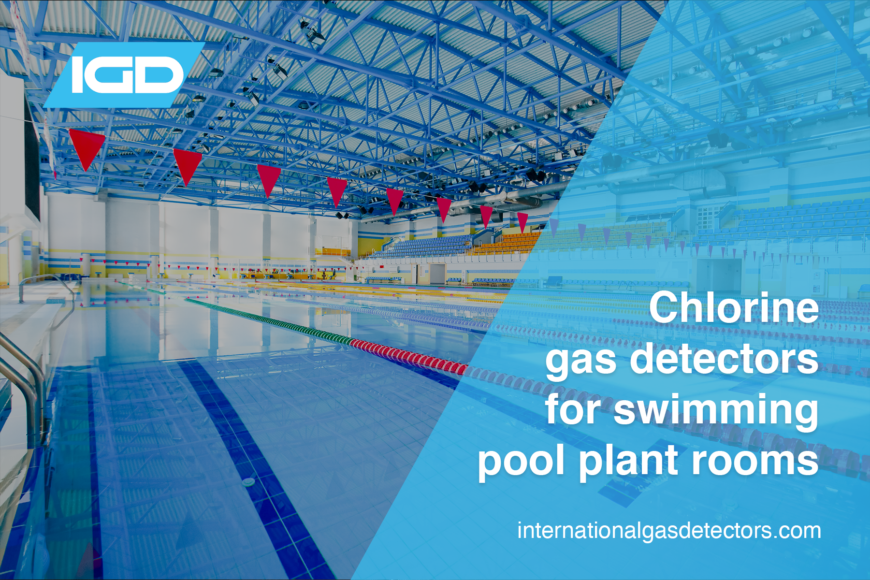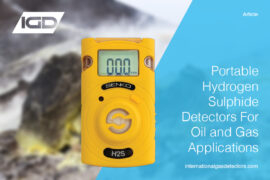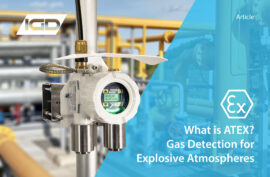Imagine going to a swimming pool and returning home with severe respiratory problems. The chances of this happening are high in public swimming pools that do not use chlorine gas detectors. Chlorine is used to disinfect swimming pools against harmful bacteria. Gas cylinders containing pressurized liquified chlorine (Sodium hypochlorite) are stored in plant rooms. These cylinders connect to a chemical feeder system that adds chlorine to pools in regulated amounts.
How Deadly is Chlorine?
Chlorine is a highly toxic gas. During World War One, the German army used chlorine as a chemical weapon against French troops, killing and injuring thousands within few minutes.
Chlorine forms harmful acids (hydrogen chloride and hypochlorous) when in contact with moist body parts like mucous membranes, throats, lungs, and eyes. A few minutes of chlorine inhalation at concentrations between 50-1000 ppm can kill a person. The recommended exposure limit over an 8-hour duration is a mere 0.5–1 ppm. Even at such minuscule limits, chronic exposures to chlorine can result in nasal and eye irritation, with a risk of permanent vision loss.
Why are Swimming Pools at Risk?
Given the indispensable use of chlorine as a disinfectant, swimming pools are high-risk areas of chlorine-related accidents. The first reported accident involving acute chlorine gas exposure in a swimming pool occurred in 1978. Since then, numerous fatal incidents have been reported worldwide. Proper installation of chlorine gas detectors would naturally have avoided the aftermath of such incidents.
These hazardous incidents can occur due to chlorine cylinder damage during transport, accidental leakage/spills in the pool room storage area, or malfunction of chlorine-disinfection systems. Liquid chlorine instantaneously converts to gas when released from the compressed gas cylinder. Acute inhalation of chlorine gas has even resulted in mass casualties. Thus, swimming pool staff and the public are at constant risk of chlorine inhalation leading to the development of critical health problems such as bronchitis, asthma, and severe acute respiratory syndrome.
Importance of Chlorine Gas Detectors
Considering the life-threatening risks of chlorine, chlorine gas detectors are a must-have solution that ensures human safety in case of accidental chlorine leaks. A natural question arises, “Why is a chlorine gas detector required if chlorine has a pungent odour and is visible due to its yellow-greenish colour?” The answer is three-fold: Firstly, it becomes visible only above the fatal limit of 1000 ppm. Secondly, low-level chronic leaks cannot be detected by sense of smell and pose a latent health threat. Moreover, chlorine gas also releases into the air via the chlorine-based treatment of pool water. Over time, the chlorine levels in the pool room and pool’s surrounding areas can accumulate and reach threshold limits. Finally, chlorine gas exposure is listed in the UK Eh 40 document which falls under COSHH regulations (Control of Substances Hazardous to Health). This means you must have adequate measures in place to ensure no one is exposed to the gas. The only way to ensure compliance is by having a fully functioning chlorine gas detector in place.
Monitoring Plant Rooms
Chlorine gas detectors are a smart monitoring solution for such situations. They contain a highly sensitive gas sensor and a control panel that displays the current chlorine concentration levels.
In case of gas leaks, the controller will activate the alarm and ventilation systems. It would allow a timely evacuation of personnel. Chlorine is heavier than air and therefore will accumulate at floor level. Thus, staff entering the pool room might not notice chlorine leaks. If the swimming pool has underground pool rooms, chlorine accumulation is inevitable. Smart chlorine gas detectors are highly beneficial in such situations providing early warning signals. Chlorine gas detectors ensure all-time safety eliminating the need for manual supervision. The controller must also be installed outside pool rooms for preventive visual confirmation of gas levels before entering the rooms. IGD’s TOC-750 addressable safe area detectors also allow for beacon sounders to be controlled from the detector, thus providing audible and visual alarms inside the plant room whilst reducing installation costs.
Contact IGD for your Chlorine Gas Detectors
With over 100 years of manufacturing gas detection equipment, IGD provide the ideal chlorine gas detector solution. The TOC-635 Controller and TOC-750 detectors provide clients with the perfect solution. Coupled with our in house gas detection service team ensures you have the complete gas safety solution when it comes to chlorine gas detection.
Interested in using chlorine gas detectors in your pool plant rooms? Contact a member of the International Gas Detectors (IGD) team today.





Comment 1
February 14, 2022 at 6:16 pm